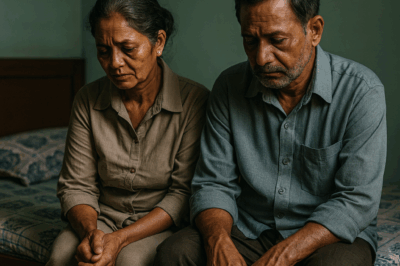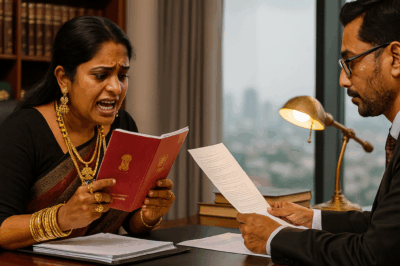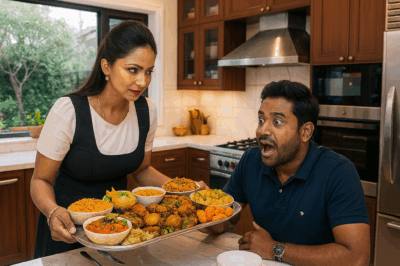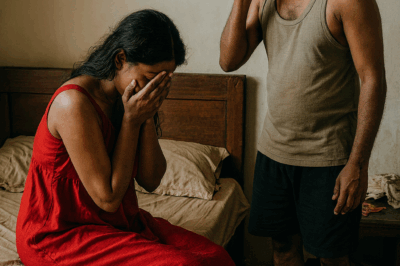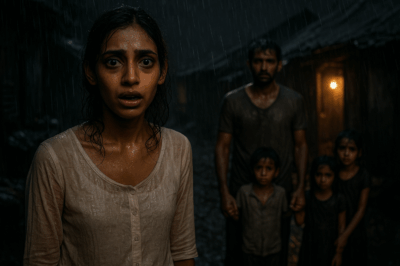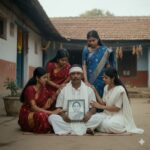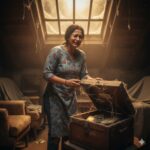At dawn, when the sun had yet to rise above the rows of tin-roofed shanties behind the wholesale vegetable market in Chandrapur, a narrow alley in the slum district was already alive with the sound of carts rolling, footsteps hurrying, and the metallic clinking of bottles and cans. In a corner near the garbage mound, a little girl was bent over, picking through discarded items with an oddly intense focus in her eyes.
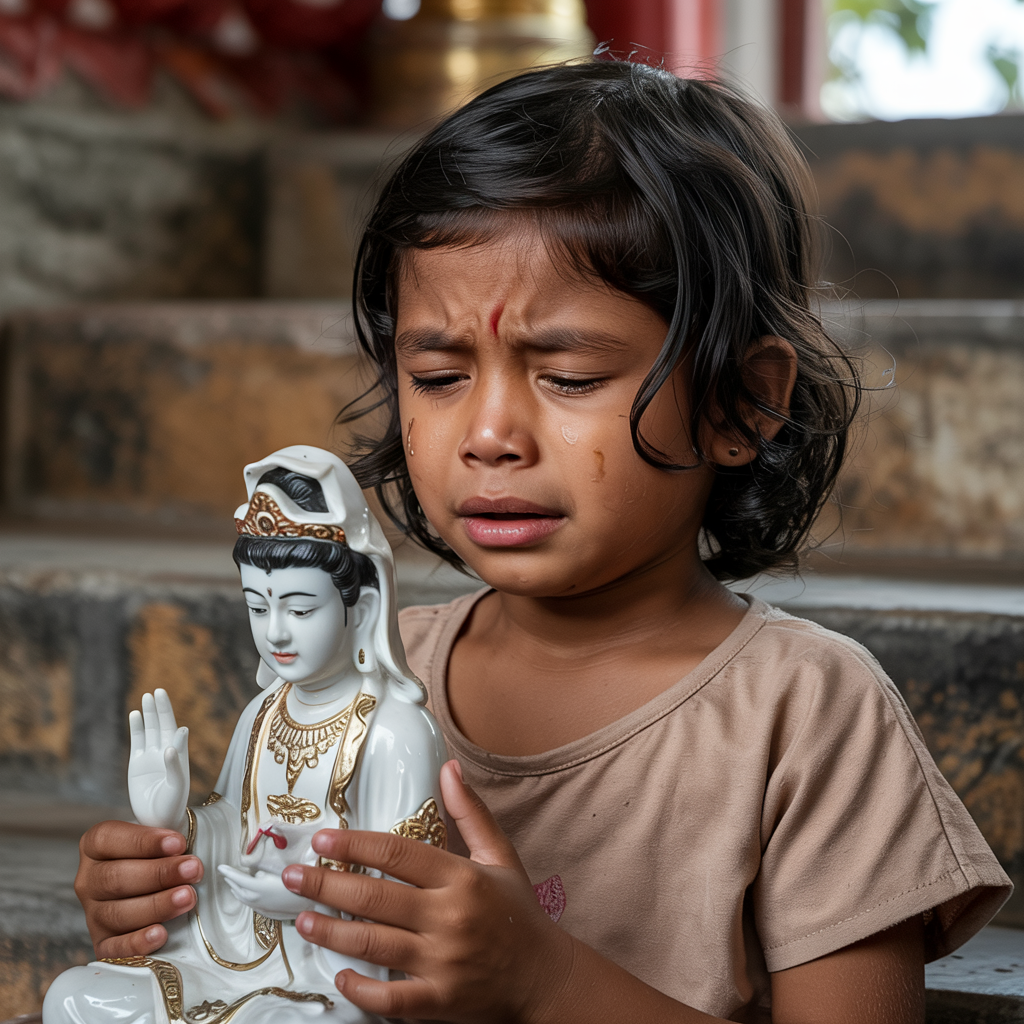
Her name was Anaya—a name that many found unusual, but it was the only thing her mother left behind before vanishing when Anaya was just four years old. Since then, she had lived with her grandmother in a ramshackle hut patched together with cardboard walls and a plastic sheet for a roof. Every day, her grandmother scavenged for recyclables, and Anaya helped after school. Life was poor—but it overflowed with love.
That morning, while digging through the wet heaps of trash behind the market, Anaya noticed something glinting faintly among the filth. Curious, she dug it out—it was a ceramic statue of Goddess Lakshmi, but broken into three parts: the head, the torso, and the left arm. Despite the chips and dust, the statue’s face remained calm and benevolent, her eyes gently closed as if smiling in quiet serenity.
Anaya hugged the statue gently and began wiping it with an old rag. A nearby fish vendor chuckled and said:
“Throw it away, child. It’s broken. Worthless.”
But Anaya shook her head:
“She looks kind… and sad. I want to take her home. Maybe it will make my grandma happy.”
And so, she carefully placed the statue into a worn-out plastic bag and brought it home. That evening, Anaya used glue to rejoin the three broken parts. Though the cracks remained visible, the statue stood upright again. She placed it on a small wooden shelf beside her bed, pressed her palms together, and whispered:
“If you’re really a goddess, please help my grandmother get better. And if you’re not, then just help me earn enough to buy her medicine.”
She asked for nothing more.
Her grandmother had been coughing endlessly for weeks, burning with fever each night. They didn’t have enough for proper medicine. People in the neighborhood said she needed to be taken to the city hospital—but it was far away and far too expensive.
The next morning, Anaya went back to the market to collect recyclables as usual. But something unexpected happened.
A well-dressed, middle-aged woman approached her and asked:
“Little girl, who collects scrap around here?”
Anaya replied politely:
“I do, ma’am.”
The woman handed her a large bag full of empty bottles and cans, then smiled:
“This is for you. Every day, I’ll leave a bag like this by that tree over there. All I ask is that you help keep this area clean.”
From that day on, without fail, the bag appeared—filled with more recyclables than Anaya could ever collect on her own. Some days, there was even a small carton of milk or a packet of biscuits inside. Thanks to that help, Anaya was able to gather enough money to buy medicine for her grandmother. Slowly, her grandmother’s health began to improve.
One rainy afternoon, Anaya returned home to find a small stream of water dripping through the leaky roof onto the shelf. The statue was damp. As she wiped it with a cloth, she noticed something strange—the cracks had faded. She couldn’t tell when it had happened, but the statue’s surface looked smoother, more luminous, almost whole again.
That evening, her grandmother said something Anaya would remember forever:
“Some things are thrown away because people think they have no value… but to someone else, they might be a miracle.”
When Anaya turned fourteen, her grandmother passed away. But Anaya was not alone.
She continued collecting recyclables, went to school every day, and took care of the statue like it was a treasure. One afternoon, while studying in her corner beside the market, a man approached and handed her a letter.
It was from the woman who had left her the recyclable bags.
The woman was a business magnate from Mumbai who had once lost her only daughter in a tragic accident. When she first saw Anaya holding that broken statue years ago, something stirred in her heart—a connection, a faith she thought she’d lost.
In the letter, she wrote:
“I’ve arranged for you to receive a full scholarship for your studies. I ask for nothing in return—only that you keep that pure heart of yours, and never lose faith in kindness.”
News
At 61, I remarried my first love. On our wedding night, as I took off my wife’s traditional dress, I was startled and pained to see…
I am Arjun, 61 years old this year. My first wife passed away 8 years ago from a serious illness….
30 minutes later, my sister was stunned when our family called with news:
My younger brother, the youngest in our family, is only 37. Unmarried and without children, he just bought a piece…
Thinking my stay-at-home wife was a spendthrift, I pretended to go bankrupt to teach her a lesson. To my surprise, that evening she brought dinner to the table and made an announcement that sent a chill down my spine…
I’m a businessman, and my wife, Priya, stays at home to take care of our two young children. Every month,…
In the middle of the night, a son-in-law called his father-in-law and told him to take his daughter back and “re-educate” her. 15 minutes later, the father-in-law arrived with something that left his son-in-law speechless…
It was nearly midnight, with a light drizzle falling outside. In the cold living room, the atmosphere was as tense…
On the day I found out I was pregnant, his mother brought me 20 lakh rupees and told me to break up. I took the money and left without a word. Eight months later, I fainted in the delivery room when I saw…
I never thought that the doctor who delivered my baby would be my ex-boyfriend, Rohan. The child in my womb,…
A poor young woman gives shelter to a man and his four children on a rainy night — what he does next leaves her completely shocked and stunned…
That night, the rain poured down relentlessly. A biting cold wind whipped violently against the small, dilapidated house at the…
End of content
No more pages to load

